PASSIFLORA
Passiflora
L., Sp. Pl. 2: 955. 1753; Gen. Pl. 5: 410. 1754; Benth. & Hook. f., Gen. Pl. 1: 810. 1862; Masters in Hook. f., Fl. Brit. India 2: 599. 1879; Willis, Dict. Fl. Pl. & Ferns ed. 7: 837. 1966; Hutch., Gen. Pl. 2: 371. 1967; Wang et al., Fl. China @ eFloras.org 13: 141; Fl. North Amer. @ eFloras.org vol. 6; Fl. Pak. @ eFloras.org p.1
Herbaceous or woody perennial vines, rarely shrubs or trees. Stem terete or angular; tendrils simple. Leaves simple or palmately 3-7(-9) lobed, rarely bilobed, alternate, surface sometimes glandular, glands or nectaries associated with marginal teeth or abaxially near margins or between primary veins; stipules leaflike to minutely setaceous; petiole usually with extrafloral nectaries. Inflorescence of solitary axillary flowers on articulated peduncle; or 2-more flowered small cymes with first flower on central axis modified into a tendril, secondary axes often highly reduced to 1-2 sometimes more flowers; rarely racemose or fasciculate. Flowers pedicellate, mostly bisexual, often large and showy; hypanthium cup- shaped or campanulate, perigynous. Sepals 4-5, often petaloid, sometimes horned outside below apex. Petals 4-5, rarely absent. Corona present at base of perianth in one to many series of showy filaments; innermost series (operculum) membranous, partially to entirely fused, margin entire or fimbriate, often incurved over nectar chamber, extrastaminal nectariferous disk (limen) present around base of androgynophore, fused to base of hypanthium. Stamens 4-5(-8), raised on androgynophore; filaments flat, basally connate into a tube and adnate to gynophore, separating below ovary, subreflexed; anthers linear- oblong, dorsifixed or versatile. Ovary on top of androgynophore, stipitate or sessile, 3(-5)- carpellate, 1-locular, parietal placentation, ovules many, anatropous; styles 3(-5), free or basally somewhat united; stigmas 3(-5), capitate. Fruit oblong to globose, pulpy berry, rarely a 3- valved dehiscent capsule. Seeds flat, mostly ovate, arillate, with minutely pitted testa.
573 species
Passiflora incarnata
Passiflora incarnata
L., Sp. Pl. 959. 1753; Bailey, Stand. Cyclop. Hort. 3: 2484. 1950; Chittenden, Dict. Gard. 3: 1491. 1951; Bor & Raizada, Beaut. Ind. Climb. and Shrubs 252. Pl. 92. fig. 147. 1954; Manil. & Sivar., Fl. Calicut 118. 1982; Fl. North Amer. @ eFloras.org vol. 6; Fl. Pak. @ eFloras.org p. 4; keralaplants.in
Perennial vine climbing with axillary pubescent to glabrescent tendrils, tendrils unbranched. Stem terete or weakly angular, pubescent to puberulent. Leaves alternate; broadly ovate, up to 12 cm long, palmately 3-lobed, lateral lobes ovate-lanceolate and central (middle lobe) ovate or ovate- elliptic, larger than the lateral lobes, leaf base truncate, apex acute, margin serrate, serrations with glands in young leaves, abaxial surface pubescent and adaxial surface glabrescent or glabrous; petioles 1-2.5 cm long, pubescent, bearing 2 sessile glands at top. Stipules linear- subulate, 4-6 mm long, sparsely pubescent, green with purple spots. Flowers solitary axillary on 4-5.5 cm long articulated pubescent peduncle, showy, large, up to 6.5 cm across, pinkish pale, bisexual, perigynous; hypanthium cupulate, pedicel ca. 4 mm long; bracts 3(-4), 1.5-1.6 cm x 1-1.2 cm, oblong-obovate, cuneate, undulate towards denticulate acuminate apex, margin with 4-6 glands. Sepals 5, free, oblong or ovate-oblong, 2.8-3.3 cm x 0.9-1.2 cm, green or green with pink margin, horned outside below apex. Petals 5, free, oblong to oblong-lanceolate, 2.5-2.7 cm x ca. 0.7 cm, pinkish pale, acute or obtuse. Corona multiseriate, of purplish-blue and white showy filaments, usually horizontal; innermost series (operculum) membranous, partially to entirely fused, margin fimbriate, incurved over nectar chamber. Stamens 5, raised on 8-10 mm long androgynophore; filaments flat, white with purple-red spots, ca. 8 mm long, basally connate into a tube and adnate to androgynophore, separating below ovary, subreflexed; anthers oblong, ca. 8 mm x 4 mm, dorsifixed, dehiscence longitudinal. Ovary present on top of androgynophore, tricarpellary, syncarpous, subglobose, pubescent, unilocular, ca. 9 mm x 5 mm, triangular with 3 parietal placentas, ovules many, anatropous; styles 3, ca. 10 mm long, light purple with dark purple red spots; stigmas 3, capitate, +/- reniform.
Fruit oblong-ovoid, purple berry, ca. 5 cm long, yellow. (Fruit not observed)
Common Names: Purple Passion Flower, True Passion Flower, Maypop, Wild Apricot, Wild Passion Vine; Jhumkalata (Hindi)
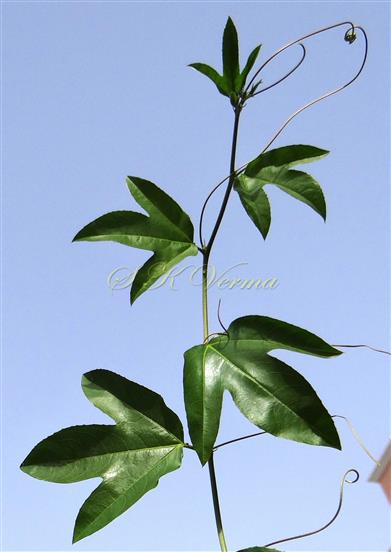
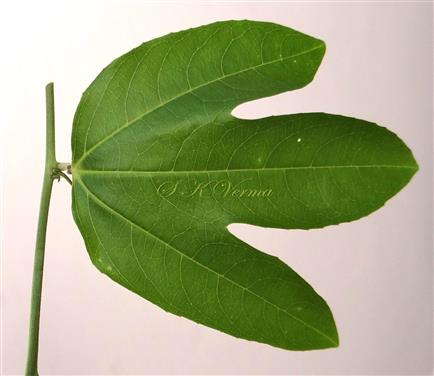
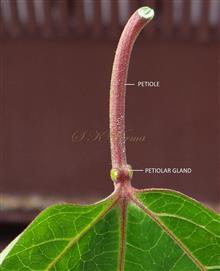
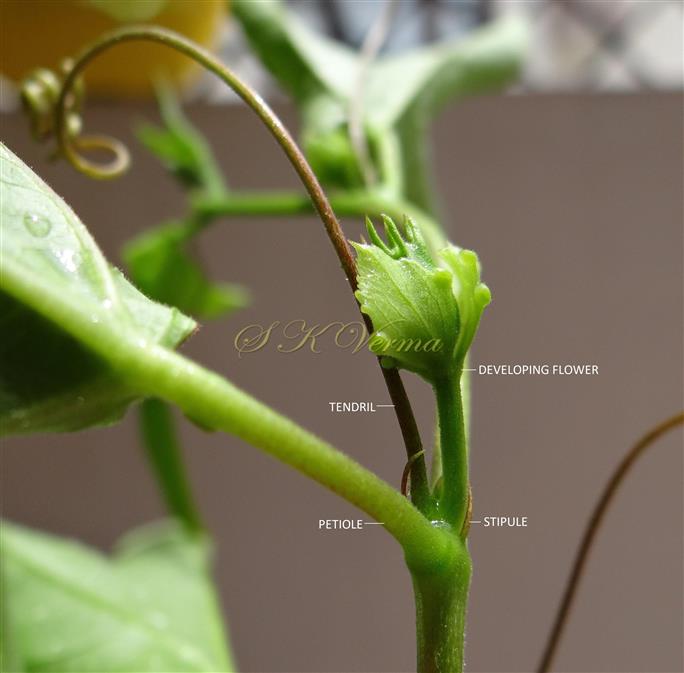
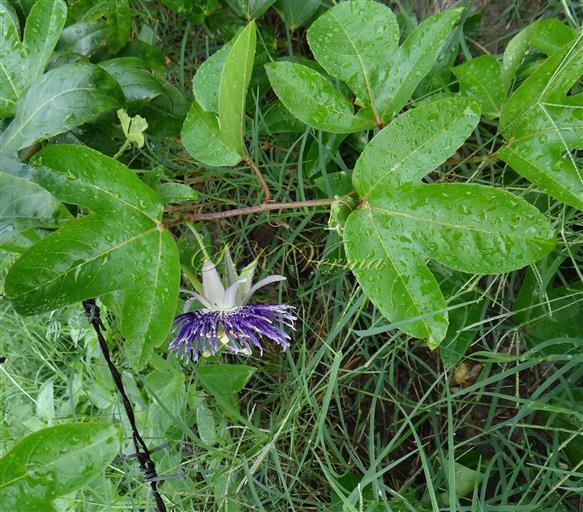
-DSC07296.jpg)


-DSC07259.jpg)
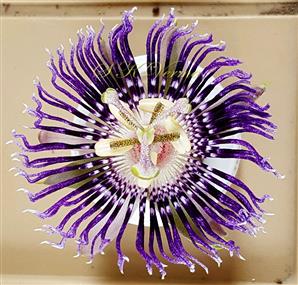
-DSC03456.jpg)
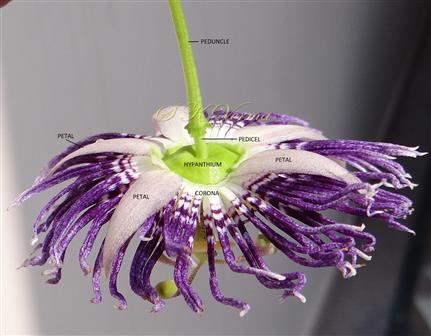
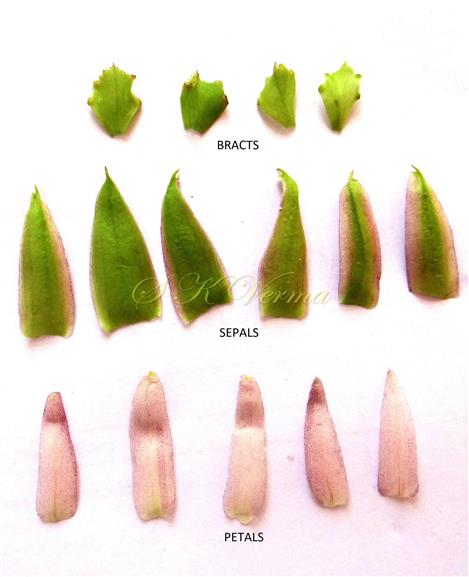
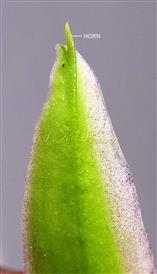
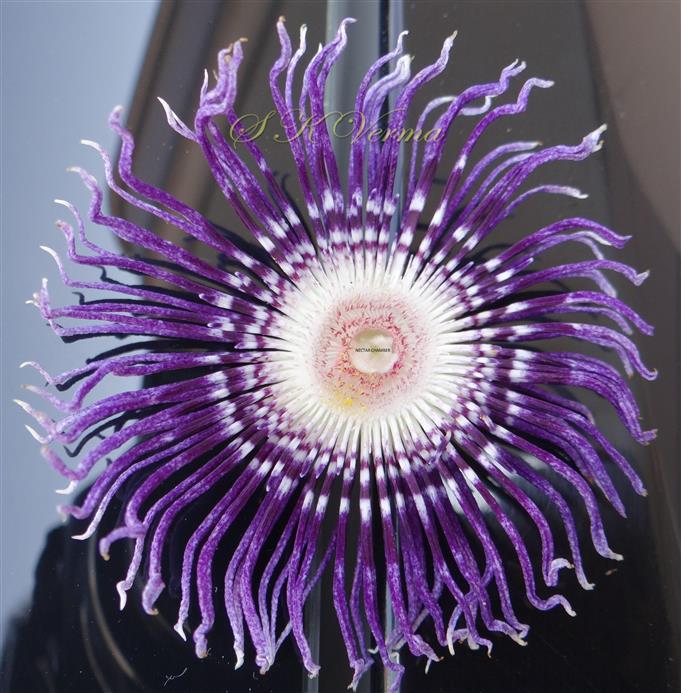
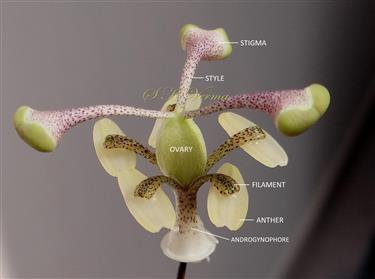
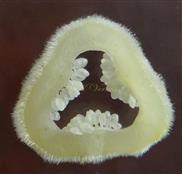






-DSC07296.jpg)
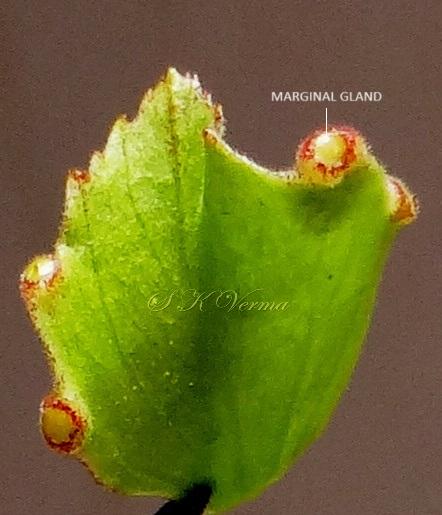
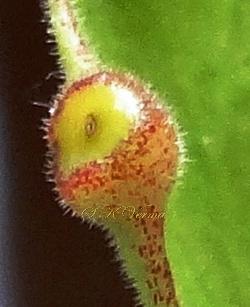
-DSC07259.jpg)

-DSC03456.jpg)





